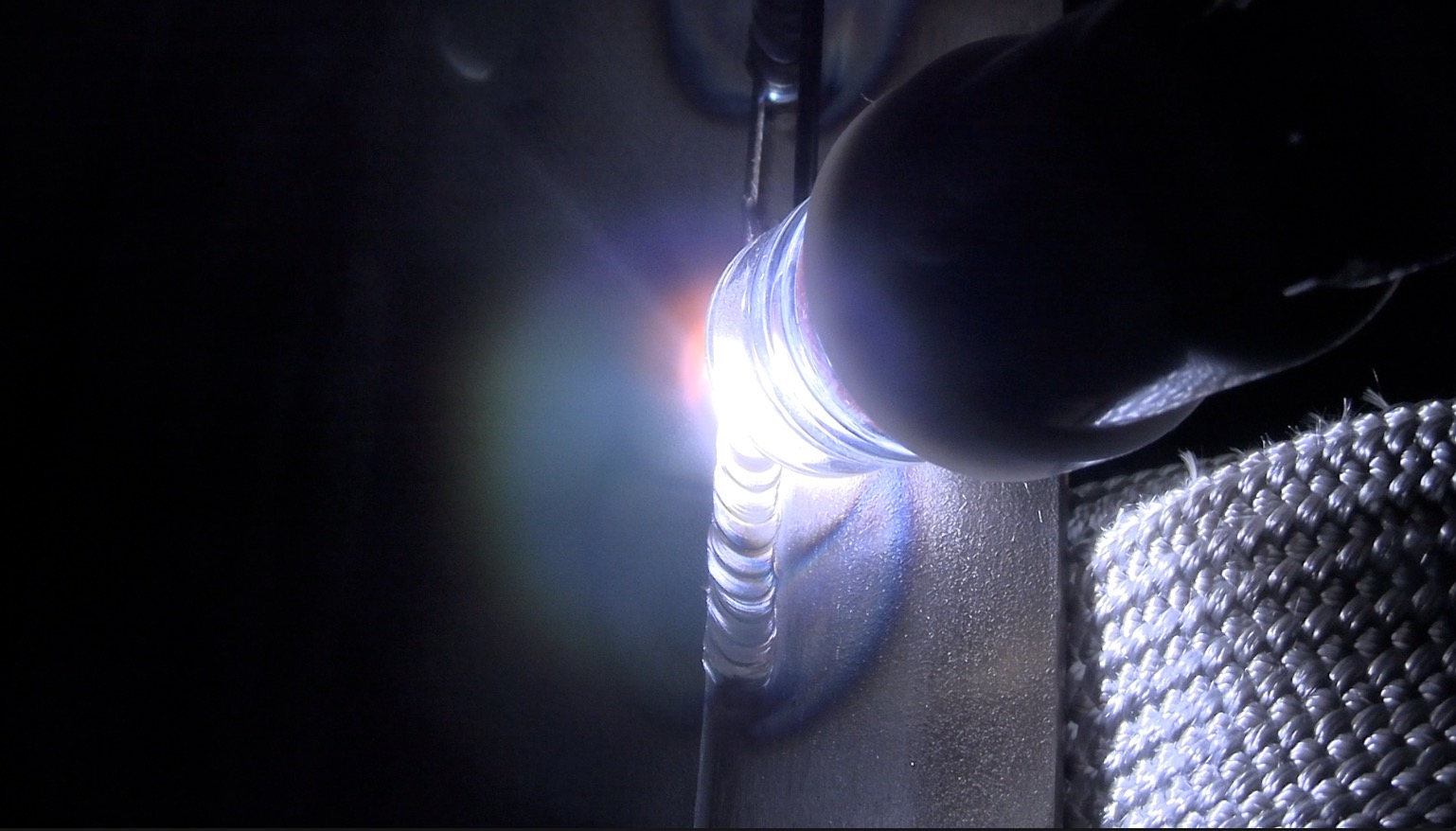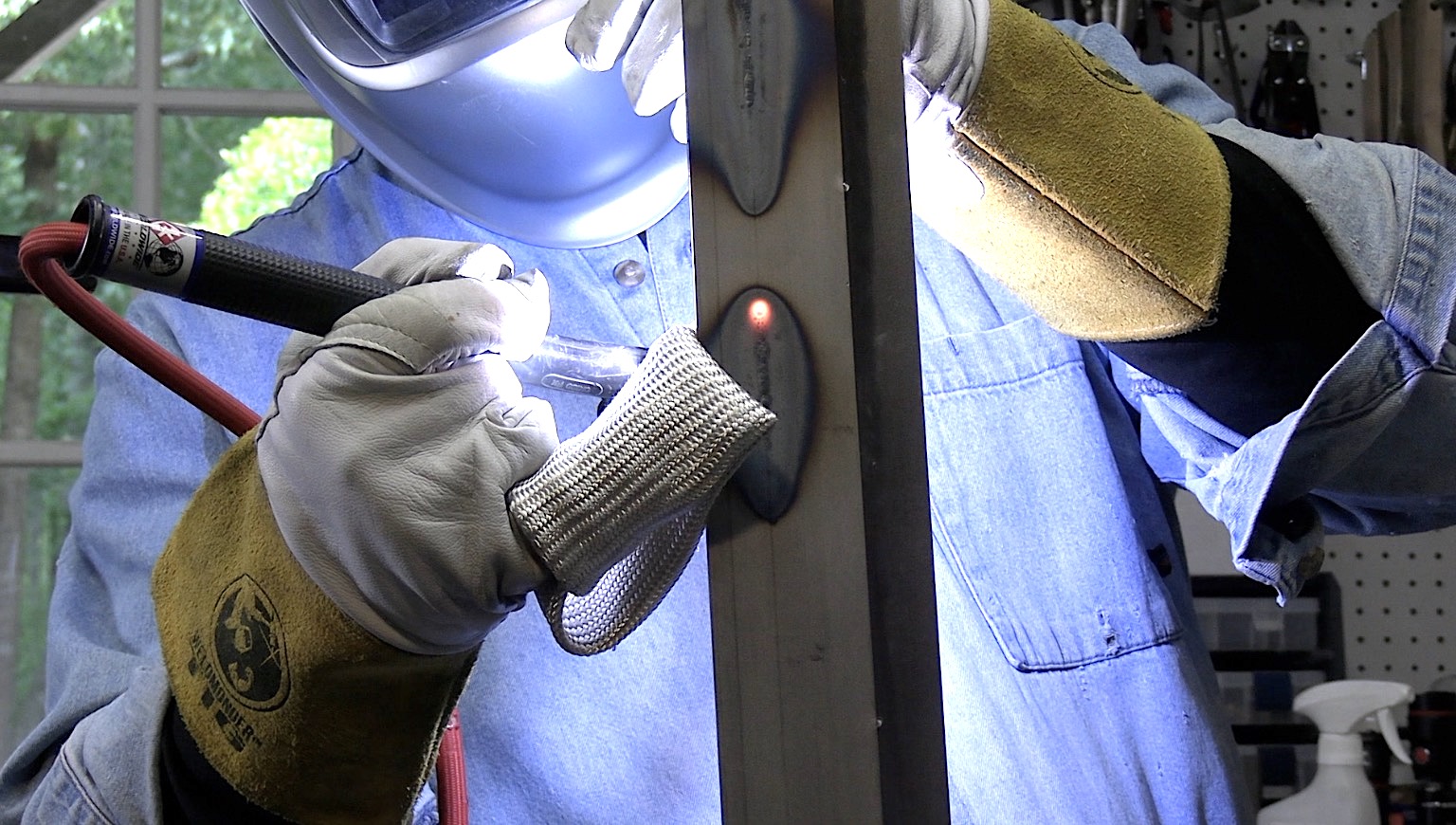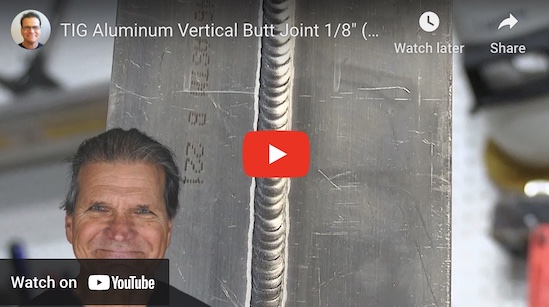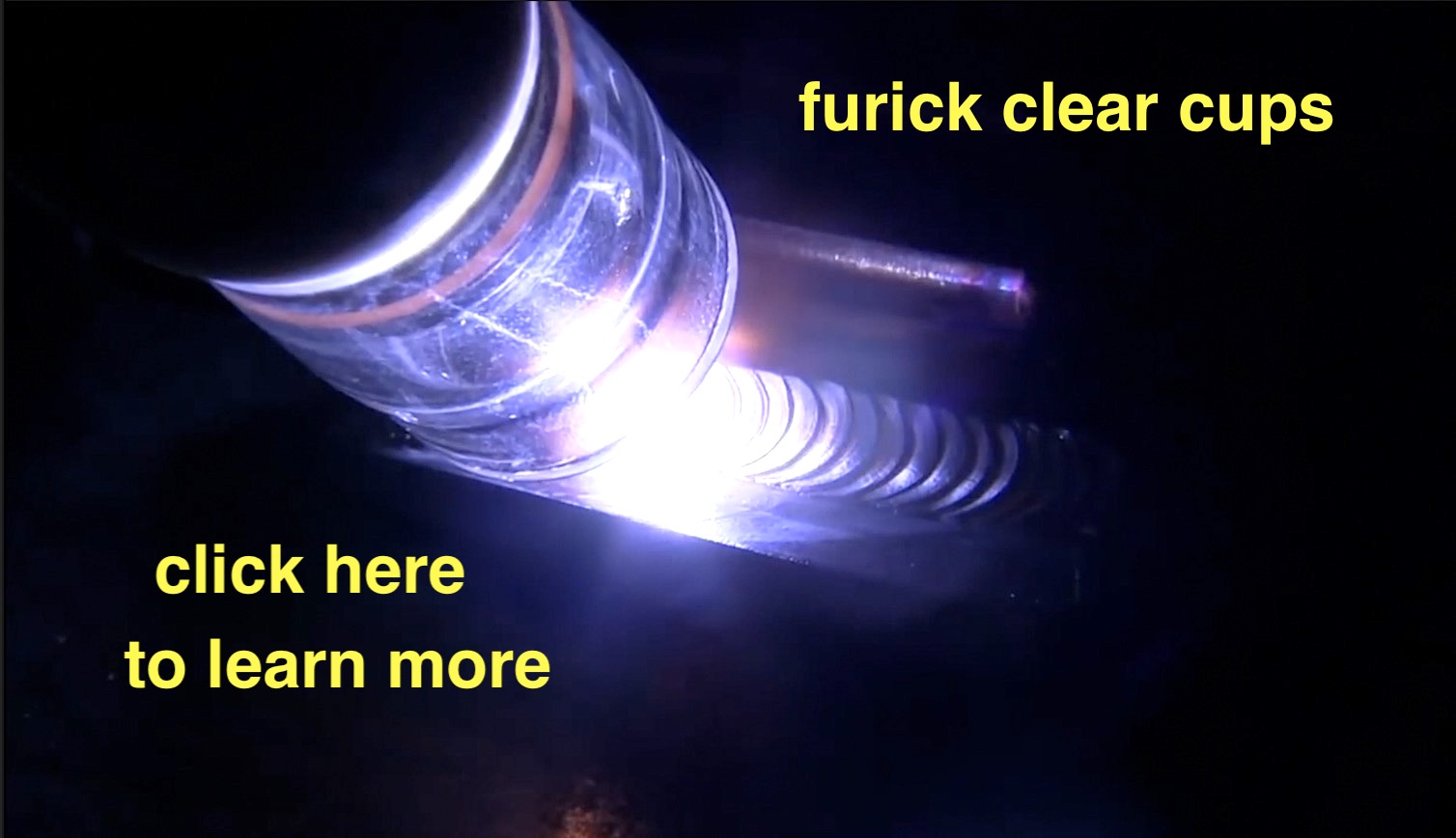3F Lap Joint - TIG Welding on 11ga Carbon Steel
- HOME
- TIG WELDING
- 3f Lap Joint
This page is about TIG welding a 3F lap joint on 11ga carbon steel.
Remember the ABC’s of welding?
Always Be Comfortable.
Sometimes its worth going to a lot of trouble to have a good place to prop so that you are steady and comfortable.
Other times, its nice to have a prop in your pocket. ( check out my TIG finger and XL TIG fingers on my store)
Watch this video on TIG Welding Aluminum
Getting Comfortable with a 3f lap joint
If you are not familiar with American Welding Society (AWS) welding positions, a 3F weld indicates a vertical fillet weld.
the 3 indicates vertical, ...and the F indicates that its a fillet weld.
In the AWS world, 1 is flat, 2 is horizontal, 3 is Vertical, and 4 is overhead.
When I made this video, I was thinking about welding students but everything here still applies to anyone struggling to learn how to TIG weld a 3F lap joint.


Metal Prep for tig welding carbon steel
For TIG welding on carbon steel, one of the most important things is metal prep.
For cold rolled steel, this might mean a simple wipe with acetone.
In fact, some cold rolled is so clean, no prep at all is necessary. (even though some light sanding usually helps).
But hot rolled is another story.
Hot rolled steel has a mill scale layer that needs to be completely removed prior to welding.
Can you TIG weld hot rolled without any prep?
Sure. you can also paint without any prep or shower with your clothes on.
But in order to get the best results, you need to be welding over clean bright metal....not mill scale.
This one thing will make more difference than anything else.
Its fundamental to getting good results.
Even though I used cold rolled steel for this video, I still went over it lightly with a flap disc and gave it a quick wipe with acetone.
( I usually wipe the filler rods down with acetone too)
Amperage and other details
105 amps DCEN using a foot pedal
#8 furick pro clear cup 20 CFH Argon
3/32" (2.4mm) 2% lanthanated Electrode
1/16" (1.6mm) ER70S-6 filler rod
I usually set the amperage to about 20% more than what I think I will need so that I have a bit of extra amperage when I need it for going over tack welds and such.
But for the sake of this video, I wanted to be able to show the exact amperage used so I set the main amperage to 105 amps and went full pedal.
I used the #8 furick pro cup because its a great all around choice for anything under 200 amps but mainly because using a clear cup helps with filming the arc so we can see the puddle better.
(I started using clear cups just for filming but I quickly learned that they actually help me to see the puddle better.)
I use a 3/32" 2% lanthanated electrode for 90% of everything I do.
It handles pretty much anything I do with the CK MT200 ac/dc welder....from welding razor blades, to 200 amps on AC aluminum.
I sharpen it like a needle for low amperage thin steel, and put a more blunt taper on it for higher amperage thick steel and aluminum.


















